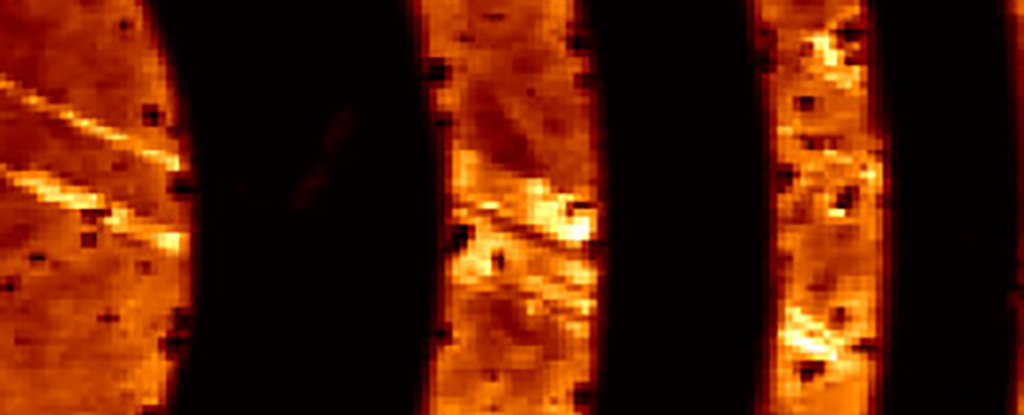A quantum phenomenon has allowed scientists to develop a lens just three atoms thick, qualifying as the thinnest ever made.
Oddly, the innovative approach allows most wavelengths of light to pass right through – a feature that could see it have huge potential in optical fiber communication and gadgets like augmented reality glasses.
The researchers who invented the lens, from the University of Amsterdam in the Netherlands and Stanford University in the US, say that their innovation will progress research into lenses of this type, as well as miniature electronic systems.
“The lens can be used in applications where the view through the lens should not be disturbed, but a small part of the light can be tapped to collect information,” says Jorik van de Groep, a nanoscientist at the University of Amsterdam.
Rather than using a transparent material’s curved surface to bend light in a process of refraction, incoming waves are instead focused by a series of grooved edges using diffraction.
The technology, known as a Fresnel lens or zone plate lens, has been used for centuries in the manufacture of thin, light-weight lenses, like those used in lighthouses.
To give the technique a quantum boost, the research team etched concentric rings into a thin layer of a semiconductor called tungsten disulfide (WS2). When WS2 absorbs light, its electrons move in a precise manner that leaves a gap that can be considered as a kind of particle in its own right.
Together, the electron and its ‘hole’ is form what’s known as an exciton, which has properties that assist in the focussing efficiency of very specific wavelengths of light while letting other wavelengths pass through unaltered.
The size of the rings, and the distance between them, allowed the lens to focus red light a distance of 1 millimeter away. The team found while the lens works at room temperature, at lower temperatures its focusing capabilities became even more efficient.
Next, the researchers want to run more experiments to see how exciton behavior might be manipulated further, to improve the efficiency and capability of the lens. Future studies might involve optical coatings that can be placed on other materials, for instance, as well as variations in electrical charge.
“Excitons are very sensitive to the charge density in the material, and therefore we can change the refractive index of the material by applying a voltage,” says van de Groep.
The research has been published in Nano Letters.

















.png)


Discussion about this post